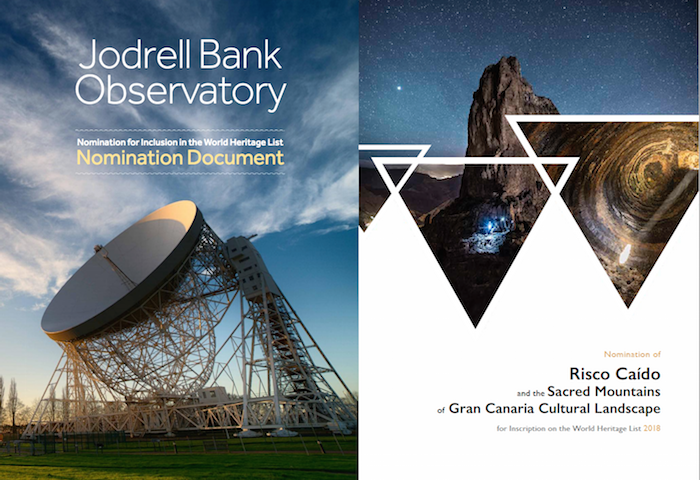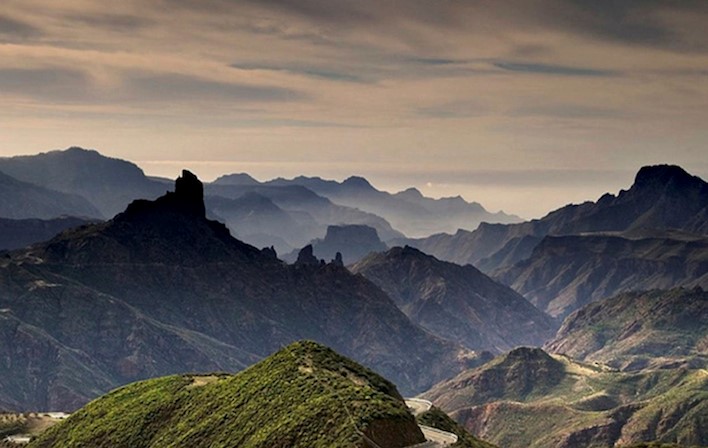2019
Two new astronomical World Heritage Sites inscribed in 2019

The front covers of the nomination dossiers for the two new World Heritage Sites
Two very different places linked to astronomy have been inscribed on UNESCO’s World Heritage List at the 43rd World Heritage Committee session in Baku, Azerbaijan.
Jodrell Bank Observatory in the UK is the first 20th-century astronomical observatory to become a World Heritage Site. From its first use in 1945 through to the present day, various observing instruments have been constructed here as the field of radio astronomy developed. The most iconic of these is the Lovell Telescope, the first large fully steerable radio telescope in the world upon its completion in 1957, which still operates as the third largest on the planet. The bowl of this huge structure, 76m in diameter and standing 89m high, is a distinctive landmark that is visible for miles around.
While much of Jodrell’s early equipment has been demolished or re-used in subsequent instruments, a good deal survives either above or below ground, and this constitutes a tangible record of the progress of the history of radio astronomy from its inception right through to the present day. While still a working scientific institution, Jodrell Bank is also a popular tourist destination running numerous inspirational outreach activities at its Discovery Centre.
Risco Caído and the sacred mountains of Gran Canaria, Spain’s successful nomination for 2019, comprises a rugged and spectacular region in the interior of the third-largest island in the Canaries that was the sacred homeland of one of the most extraordinary and least known island cultures on the planet—one that evolved in total isolation over more than fifteen hundred years. The Caldera de Tejeda contains numerous structures built by the original inhabitants of Gran Canaria, many aligned with the rising and setting sun, particularly at the summer solstice and the equinoxes, together with artificial caves and other structures used for rituals and as astronomical markers to control the passage of time. This new World Heritage property is a “cultural landscape” not excusively relating to astronomy, but rather highlighting cultural astronomy operating in a rich historical and social context.

The Caldera de Tejeda. © Cabildo de Gran Canaria
Risco Caído and the sacred mountains of Gran Canaria is described in detail in a full case study on this portal.
These two inscriptions represent a successful outcome for the Astronomy and World Heritage Initiative, now ten years old, and it is hoped that more inscriptions of astronomical heritage sites will soon follow.
The last astronomical heritage inscriptions were both in 2010: The Jantar Mantar at Jaipur in India and Dengfeng Observatory in China, as part “Historic Monuments of Dengfeng in “The Centre of Heaven and Earth’ ”.





